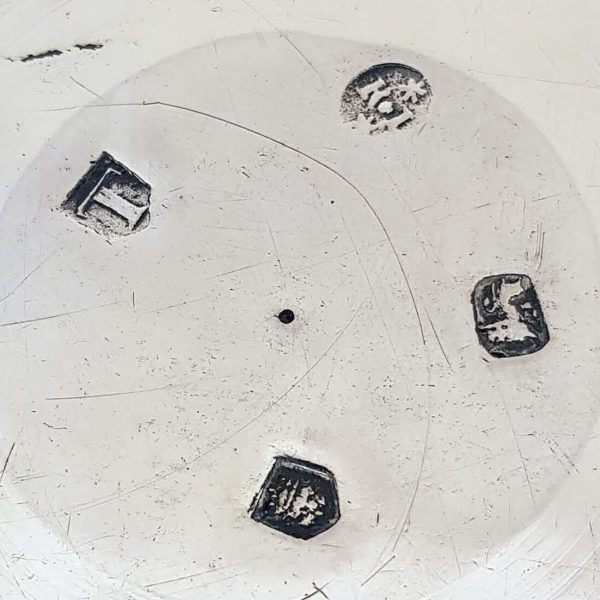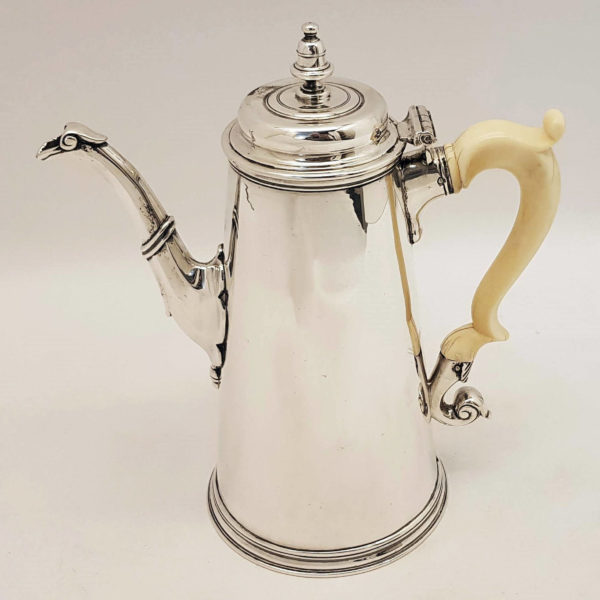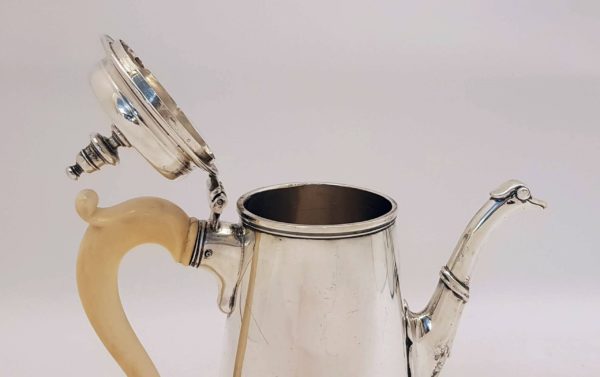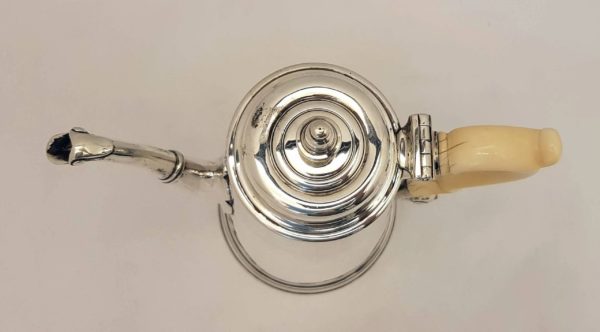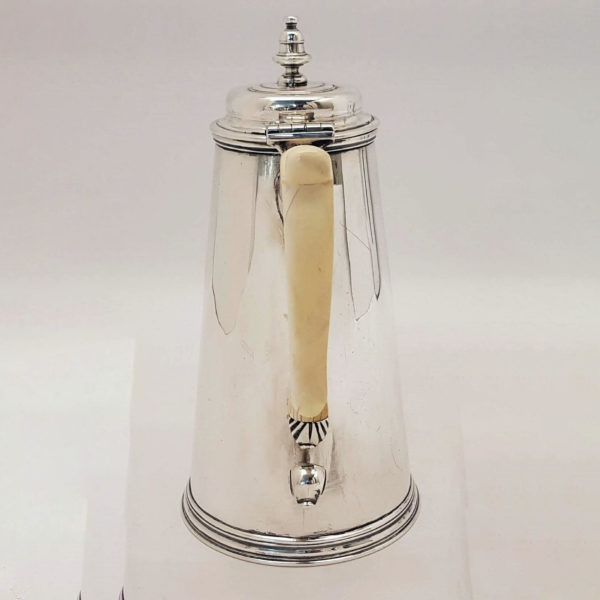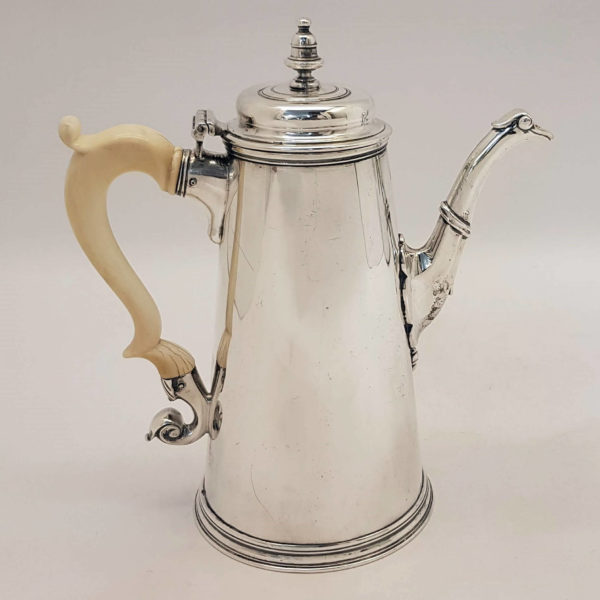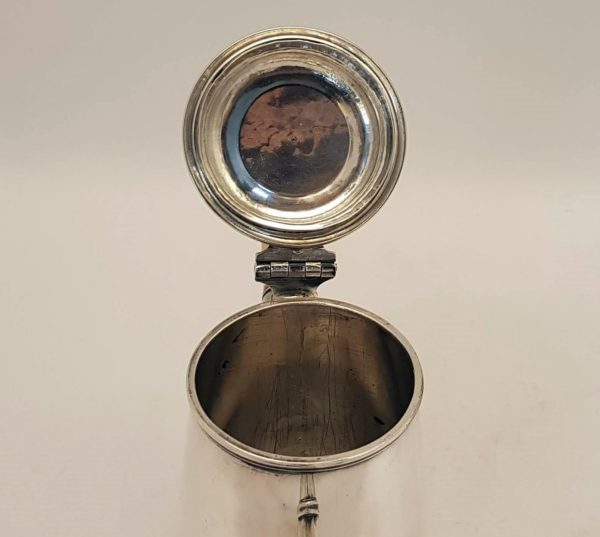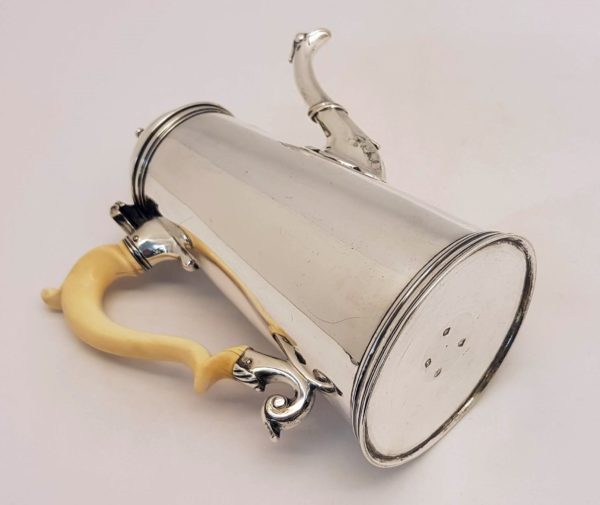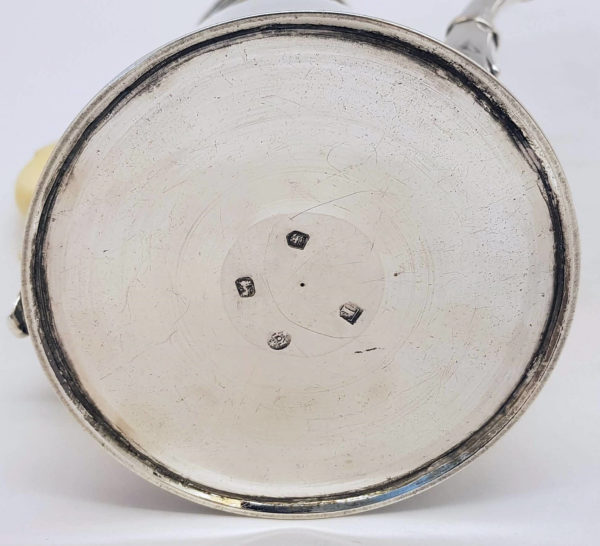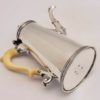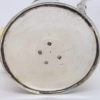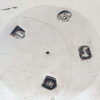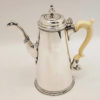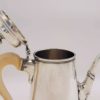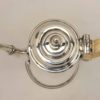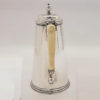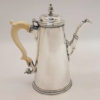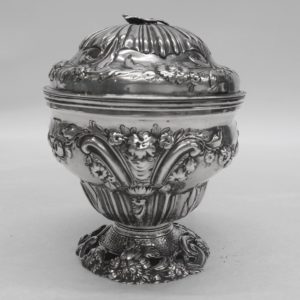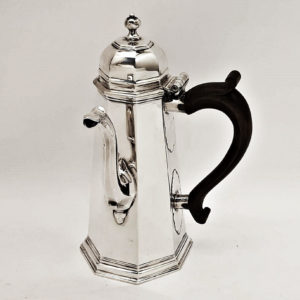George II Silver Coffee Pot
SOLD
Stock: 9878
Date: 1734
Maker: John Richardson
Country: England
A good plain style antique silver coffee pot with straight tapering sides, a shallow domed lid, and a shaped ivory...
Description
Condition
The coffee pot is in very good condition. The pot has been tested for water retention and does not leak.
Maker Information
Maker: John Richardson
John Richardson, London silversmith, apprenticed to plateworker Henry Greenaway 1661, free 1669. Richardson seems to have continued to work with Greenaway until his retirement in 1670 when Richardson took over the premises and bound his first apprentice Walter Arden. Richardson had both a workshop and an active retail trade and during the 1680’s he was busy making cups and tankards with the exotic flat-chased chinoiserie decoration fashionable at that time. He also produced altar plate for Westminster Abbey supplied by John Thursby. John returned to his home town of Worcester in 1695. Died 1698. John’s mark of “IR” monogram in script, in the Italian hand, is similar in style to other aspiring silversmiths aiming at the top end of the market, such as Abraham Chair and John Bache. He used the same mark throughout his career. John’s younger brother Samuel was apprenticed in 1663 to Edward Decayne, a shopkeeping goldsmith specialising in jewellery. Samuel moved back to Worcester in 1674, died 1711. A second London silversmith named John Richardson (known as John Richardson I) was apprenticed to Richard Watts 1715, free 1723. Two marks (New Standard and Starling) entered as largeworker 1723. According to Grimwade, Richardson's career as silversmith possibly didn't last very long and he took up service as a soldier to King George II.
Our Guarantee
Customer satisfaction is our primary concern
All silverware on our website is checked thoroughly prior to offering it for sale and every product listing contains a condition report and details of the silver hallmarks.
All items offered on our website include:
- Free Shipping Worldwide
- Tracked and Insured
- 14 day no quibble money back guarantee
- We are accredited members of LAPADA and conform to their strict professional standards
- We dispatch 1-3 days after receiving cleared payments
More detailed information about deliveries, returns and how to pay is available in the Help section at the bottom of this page.
